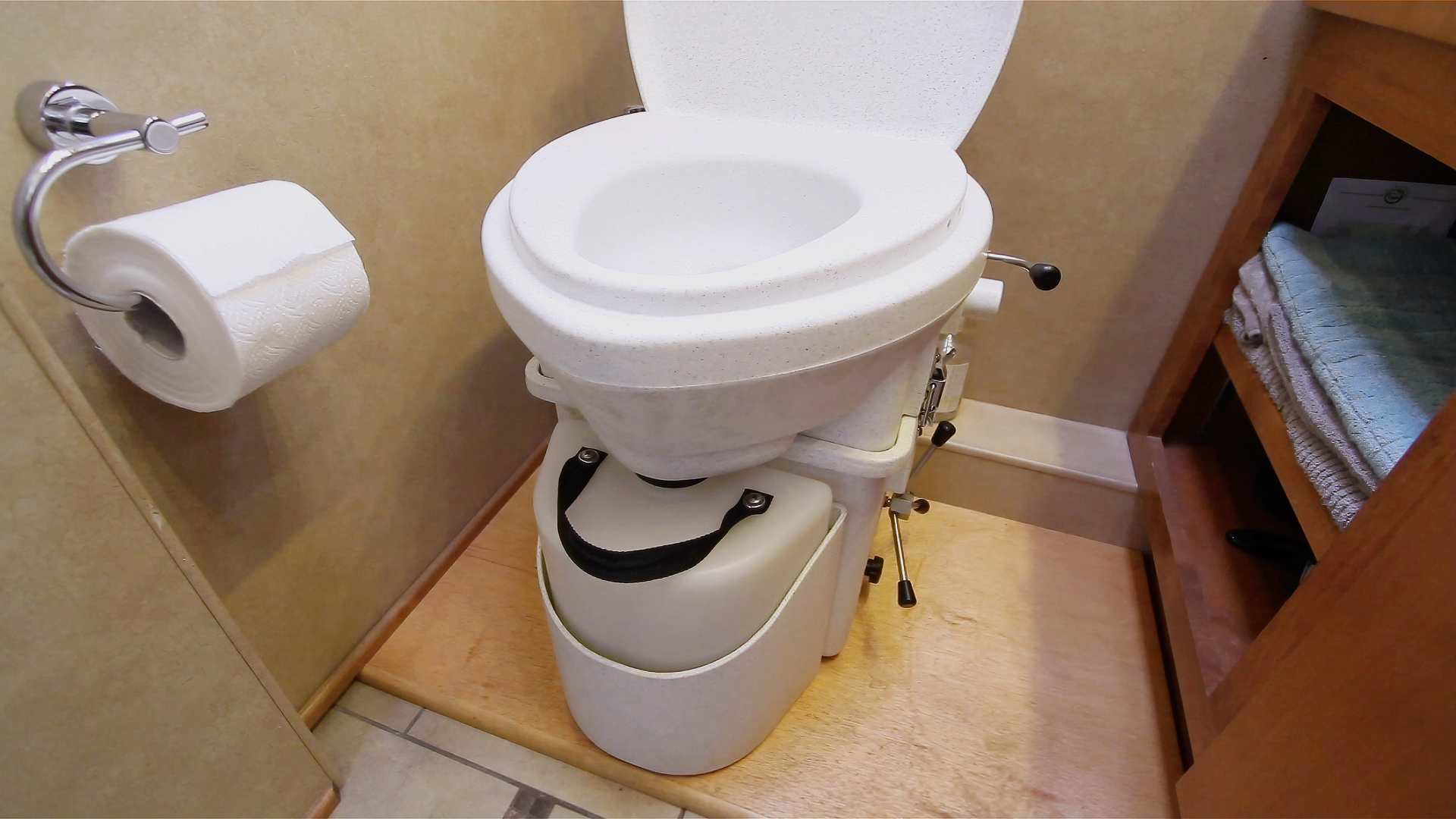Switching from a traditional RV toilet to a composting toilet presents a unique opportunity for enhanced sustainability and convenience while traveling. Composting toilets are gaining popularity among full-timers and eco-conscious RVers for their lower maintenance needs and reduced water consumption.
Interestingly, many RV enthusiasts find relief in moving away from traditional black tanks, considering the benefits of less water usage and reduced reliance on pumping systems.
This guide will explore the installation of a composting toilet in your RV, addressing common concerns while providing insights into the benefits and drawbacks of making the transition. With a comprehensive overview, practical advice, and user experiences, we aim to equip you with everything you need to know—whether you’re a curious newbie or ready to roll up your sleeves for installation.
Table of Contents
- Overview of Composting Toilets in RVs
- Preparing for Installation
- Step-by-Step Installation Process
- Maintenance and Care of Composting Toilets
- Pros and Cons of Composting Toilets in RVs
- User Experiences and Insights
- FAQs about RV Composting Toilets
Overview of Composting Toilets in RVs
Composting toilets provide a revolutionary alternative for RVers, separating waste into solids and liquids. They use aerobic decomposition to transform human waste into compost material.
Understanding what sets composting toilets apart from traditional black tanks is crucial.
Where traditional toilets require extensive plumbing and the management of black tanks, composting toilets stand out for their environmental benefits and adaptability to off-grid living.
How Composting Toilets Work
Composting toilets operate by separating liquid and solid waste. The solid waste is mixed with carbon materials such as sawdust or coconut coir, allowing aerobic bacteria to decompose the material without water.
The result is a dry composted material that can be disposed of safely or even used as fertilizer in non-food applications.
Meanwhile, the liquid waste is collected in a separate tank, which should be emptied regularly.
Benefits Over Traditional Toilets
The transition to composting toilets comes with numerous advantages, primarily focusing on sustainability and convenience. Many RVers prefer to make this change due to:
- Lower maintenance needs
- Less frequent waste management
- Reduced water consumption
The above table emphasizes the clear operational differences between traditional systems and composting toilets. Recognizing the benefits can significantly influence your decision to switch, especially if you’re considering extending your off-grid adventures.
While the traditional black tank system requires frequent maintenance, the composting option reduces that burden, which is particularly appealing to many RVers who prefer minimal interference in their travels.
- Composting toilets separate waste and rely on aerobic decomposition for processing.
- The benefits include reduced water use and a shift to sustainable waste management practices.
- Overall maintenance is less frequent, which can enhance your RVing experience.
Preparing for Installation
Before diving into the installation process, it’s crucial to prepare adequately. This preparation includes ensuring you have the right tools, materials, and ample space within your RV.
The choice of composting toilet model can significantly influence the requirements and feasibility of installation.
Types of Composting Toilets
There are several types of composting toilets available, including:
- Self-Contained Models: These units combine solids and liquids in one compact unit and are typically easier to install.
- Split Models: These feature separate compartments for solids and liquids, which can offer more efficient waste processing but may require more space and plumbing considerations.
- Incinerating Toilets: These options burn waste at high temperatures, but they require electricity, which may not suit off-grid RVers.
Necessary Tools and Materials
Once you’ve selected your composting toilet, gather the following tools and materials for a smoother installation process:
- Basic hand tools (screwdrivers, wrenches)
- Sealant and screws
- Ventilation materials
- Composting medium (e.g., coconut coir or peat moss)
Anecdotal reports from many RV enthusiasts suggest that thorough planning significantly reduces installation stress. Understanding your specific model’s requirements and preparing the necessary materials will ensure a smoother process.
- Select the right type of composting toilet based on your RV’s design and personal preference.
- Gather all necessary tools and materials prior to beginning the installation.
- Consider ventilation needs and potential space modifications during your preparation phase.
Step-by-Step Installation Process
Installing a composting toilet can be a straightforward process, primarily involving the removal of your existing toilet and replacing it with the new unit. Below, we outline the necessary steps to ensure you can confidently complete the installation.
Removing the Old Toilet
To start the installation, follow these steps:
- Turn Off Water Supply: Ensure the water supply to your old toilet is turned off.
- Disconnect Water Lines: Use your tools to disconnect the water lines carefully.
- Remove Old Toilet: Unscrew the old toilet from its base and lift it away, being careful not to damage any plumbing.
Installing the New Composting Unit
Once the old toilet is removed, you can proceed to install your composting toilet:
- Placement: Position the new composting toilet according to your manufacturer’s recommendations.
- Screw Down the Unit: Use screws to secure the toilet to the base.
- Set Up Ventilation: Ensure proper ventilation by setting up the fan system per the installation guide.
This table breaks down the installation process into manageable steps. By tracking time estimates, you can prepare better and manage your workload.
Each installation may vary, but being aware of potential time commitments aids in smooth transitioning.
As more RVers switch to composting toilets, gaining practical experience through standardized installation guides makes the process easier no matter your skill level.
- Follow a systematic approach to safely remove and replace your toilet.
- Consider time estimates for each step to manage the installation effectively.
- Ensure proper ventilation to maintain odor control post-installation.
Maintenance and Care of Composting Toilets
Understanding how to maintain your composting toilet is vital for effective odor control and operational efficiency. Routine maintenance tasks are essential to keeping your unit functioning optimally and prolonging its lifespan.
Routine Maintenance Tasks
To ensure the efficiency of your composting toilet, adhere to the following maintenance tasks:
- Regular Compost Addition: Add carbon materials regularly, such as sawdust or coconut coir, to help with moisture absorption and odor control.
- Emptying the Liquid Tank: Check the liquid tank every few days and empty it as needed to avoid overflow.
- Inspect for Moisture: Verifying that your composting area stays dry prevents unwanted odors and issues.
Common Issues and Solutions
Even with diligent maintenance, challenges may arise. Here are some common problems:
- Bad odors: Ensure proper aeration and add carbon materials as needed to alleviate odors.
- Moisture build-up: If your unit is too damp, increase ventilation and alter composting materials accordingly.
User testimonials indicate that long-term waste management can be less labor-intensive than anticipated. By establishing a routine, many RVers report that with proper practices, common complaints with composting toilets can be effectively mitigated.
- Regular maintenance tasks include monitoring compost levels and ensuring proper ventilation.
- Know how to troubleshoot common issues to resolve them swiftly.
- Establishing a routine reduces the likelihood of odors and maintenance headaches.
Pros and Cons of Composting Toilets in RVs
Making an informed decision about whether to install a composting toilet in your RV necessitates weighing the pros and cons of this alternative. We summarize key benefits and potential drawbacks to illustrate a comprehensive view of this transition.
Advantages
Some of the key benefits of switching to a composting toilet include:
- Lower Water Usage: Composting toilets typically use little to no water, making them ideal for extended trips off the grid.
- Reduced Black Tank Reliance: RVers can save time and hassle by eliminating the need to pump black tanks regularly.
- Minimal Maintenance Requirements: With proper usage, composting toilets require less frequent emptying than traditional systems.
Disadvantages
Conversely, potential downsides include:
- User Discomfort: The idea of handling compost may feel uncomfortable for some users, particularly novices.
- Space Limitations: Composting toilets can be bulkier than traditional counterparts, requiring careful consideration of RV space.
Analyzing the factors detailed in the table presents a balanced perspective on the decision at hand. As RVers lean more into sustainability, the pros of composting toilets typically outweigh the cons, especially when considering the environmental impact and overall convenience.
Gaining a complete understanding of both benefits and drawbacks can help you align your decision with your RV lifestyle.
- Composting toilets yield lower water usage and reduced maintenance compared to traditional systems.
- User discomfort and potential space limitations require careful consideration.
- Understanding pros and cons helps you make an informed decision aligned with your RV lifestyle.
User Experiences and Insights
User accounts play a pivotal role in understanding the practical implications of installing a composting toilet. Firsthand experiences demonstrate what potential RVers can expect along with their challenges and victories.
Real RVer Testimonials
Many RV enthusiasts who switched to composting toilets share positive feedback. A user recounts their transition, stating, “After two years of full-time RVing, I realized my Natures Head composting toilet is vastly better than my previous black tank, primarily for its minimal maintenance.
We dump solids six times a year versus weekly nuisances with traditional systems!”
Lessons Learned
Despite the benefits, challenges can emerge. Users often advise on learning the proper maintenance routine quickly to avoid issues, noting that: “Don’t forget to empty the liquid tank regularly; failure to do so results in cleanup challenges,” one user remarked after encountering moisture issues.
Collectively, these experiences underscore a sentiment of growth through transition. Many RVers emphasize that willingness to adapt and embrace new maintenance habits transforms initial apprehension into confidence.
- User experiences highlight the advantage of minimal maintenance with composting toilets.
- Learning proper maintenance routines significantly impacts the overall satisfaction.
- A willingness to adapt can enhance the RVing lifestyle and encourage sustainable practices.
FAQs about RV Composting Toilets
What do I do with the compost?
Disposing of compost can vary based on local regulations and your location. Typically, finished compost can be used in non-food gardens or safely disposed of in a trash bin.
Always ensure that the compost has adequately decomposed to minimize any health hazards.
Many RV users find that keeping a container for disposal while traveling is helpful for maintaining cleanliness.
Are composting toilets smelly?
When maintained correctly, composting toilets are designed to minimize odors. Key components like ventilation systems help ensure air circulation, thereby controlling any unpleasant smells.
Users report that with proper compost addition and regular maintenance, odors are rarely an issue compared to traditional black tanks.
How often do I need to empty it?
The liquid tank typically needs emptying every 3-5 days depending on use, whereas the composting solids compartment can often be emptied every 2-3 months. Regular checks are vital to staying ahead, especially if you are in a high-use situation or traveling in warmer climates.
Can I use regular toilet paper?
Generally, you can use regular toilet paper in composting toilets, but it is advised to opt for biodegradable options when possible. Some users report that thicker toilet paper can hinder composting efficiency; thus, experimenting with different types can help find the best option for your system.
What happens if I forget to empty the liquid tank?
Forgetting to empty the liquid tank can lead to overflows and messes, but the consequences can often be easily managed. Users advise keeping a consistent routine to check levels regularly, and in case of an overflow, ensure immediate cleanup to prevent odors and moisture buildup.
Conclusion
In conclusion, installing a composting toilet in your RV can be a worthwhile investment, enhancing both your environmental footprint and day-to-day living convenience. While transitioning from a traditional toilet involves modifications and learning new maintenance routines, the rewards often surpass the investments made.
Understanding the intricacies of installation and regular care ensures a successful outcome, permitting a more sustainable and pleasant RVing experience.
The insights from current users demonstrate that with the right approach, the switch might just be the best decision for your RV adventures.

